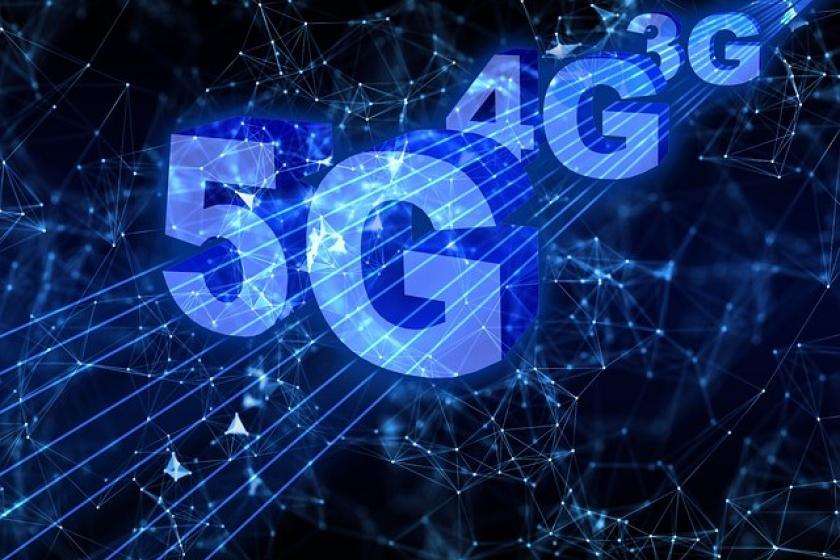Matching 5G Demands with the Right Technology
The push for 5G-enabled apps reveals the need for data platforms to sync and scale across diverse networks. Are your applications ready to engage?
May 27, 2021

Use cases for 5G applications continue to grow - encompassing consumer multimedia, retail intelligence, automotive management, robotics control, and more. Technologies for edge computing are emerging more slowly than the hype as IoT rollout and devices with embedded machine learning continue to be tested.
For any of these areas to continue to grow, architects must make a new focus on the layer between the 5G infrastructure and user applications – namely, the processing capabilities built on the Internet of Things (IoT) devices.
Supporting Mobility
Consumers are well acquainted with the mobile network and phone manufacturer's need to market an unending stream of new technology – of which 5G is just a part. Customers are promised higher-performance data networks that they may not even need. Indeed, most consumers do not understand that they may not be the primary consumers of 5G technology.
If 5G is not just for consumers, then who is going to benefit truly?
Mobile phones may fit into the edge computing paradigm at one level. Still, to take full advantage of 5G and IoT, the real focus is on processing machine-collected data at the point of consumption, recognizing that there is a momentary relationship between the consumer holding a 5G-enabled device and the surrounding IoT sensors as that user passes through this smart mesh. That moment is a digital experience opportunity.
Next-Gen Services
Beyond the predominant consumer use cases, there is a new generation of machine-centric applications being built that require sophisticated networks and computational capabilities embedded in the network itself.
For example, think of automobiles as a mobile set of sophisticated sensors (IoT devices) attached to other cars on the distributed (5G) network. With reliable high-bandwidth networking and in-car processing platforms, an application can analyze behavior, communicate with other vehicles and assess local conditions to give immediate feedback to the driver.
Previously, the vehicle would have been only running autonomously without all this interconnectedness. The system's true power will emerge once flexible data processing platforms support the powerful networking capabilities of 5G.
Blockers to 5G Applications
5G networks are dense and highly performant, but the scalable data communications and processing backbone is missing. 5G only lays down the path to service through their networks for data processing platforms – companies still need to develop their solutions on top of it.
Two areas must be addressed by those wanting to leverage the advantages of this new computing powerhouse for their database-driven applications: scalability and synchronization.
Scalable Data Platforms
First, organizations wanting to leverage the benefits of 5G and IoT must have a scalable data processing platform as part of their solution. If not, you risk patching old technology on top of new infrastructure – completely wasting the resilience and power of the new architecture.
Scalable solutions will become inherently tied to geographic distributions of computing resources. For example, a 5G network can provide robust interconnection between devices across a campus or neighborhood. Local processing capabilities can bring computing power closer and closer to the end-user or device that needs it.
A cruise ship can use the same model to keep guests connected to their onboard services while also providing Internet access and device tracking to allocate onboard resources effectively.
The network must adapt to changes in size and scale of usage and devices regardless of the locale. Adding a new building to campus or a new room to a ship should only require adding another node in the overall network to maintain capacity.
Offline Synchronization
The second barrier to building game-changing 5G applications is keeping data up to date across the network.
Most current data solutions expect enterprise-level connectivity for all their applications. However, in a 5 G-powered infrastructure, applications must go in and out of 5G coverage without breaking. IoT platforms may want to save power and quietly collect and analyze data until a time when using the network is needed.
Both these scenarios require data platforms with advanced sync capabilities – meaning applications run as expected, collecting data or user input while offline. When brought online, they can quickly use the 5G network to sync to other user devices or other distributed processing capabilities as needed.
How to Prepare for 5G
There is a looming problem because many smart-mesh developers haven't connected those dots yet. Once they do, they might discover their database infrastructure isn't up to the task. Once an improved approach is taken, data syncing rates and scalability will be a catalyst for developers to conjure new ways to create richer digital experiences.
In time, such breakthroughs will elevate and change the familiar use cases mentioned earlier. But for now, some low-hanging fruits for consumers will be picked – e.g., mobile communications, streaming video, and gaming, each of which requires high degrees of real-time personalization as well as on-the-spot data availability.
The hallmarks of complete business integration will be richer data streaming and more accurate information in apps.
5G may change the world, but only if it is first proven in the digital world's backrooms, among databases, and their connection to the edge. If you want to prepare for 5G, this is the place to target your efforts.
Jeff Morris is VP of Product & Solutions Marketing at Couchbase.
Read more about:
5GAbout the Author(s)
You May Also Like





